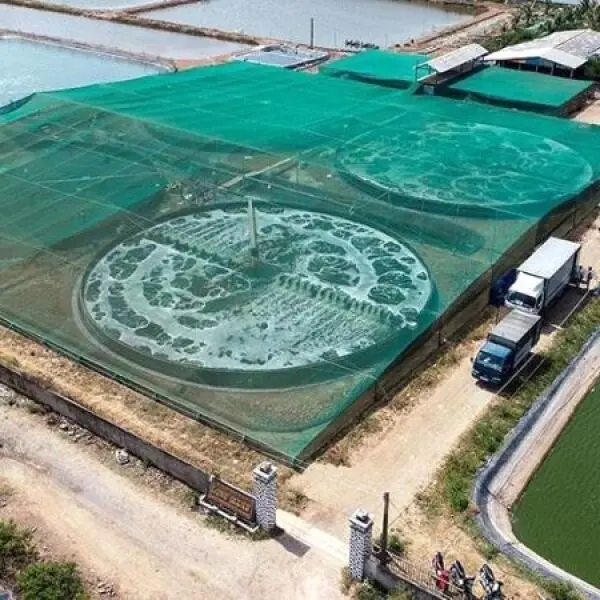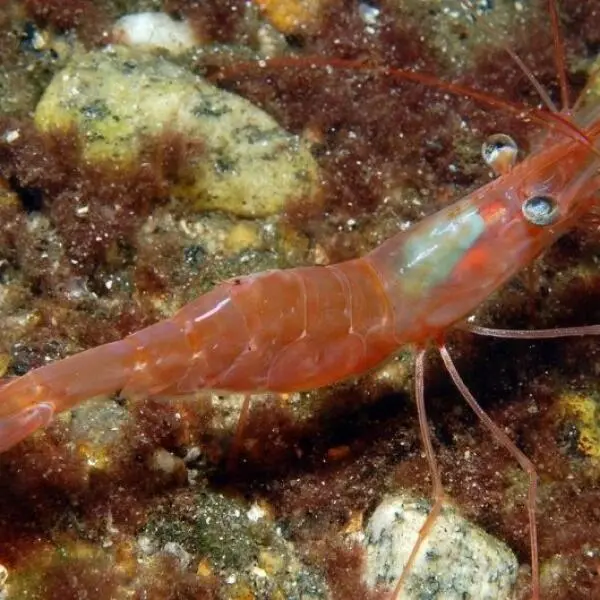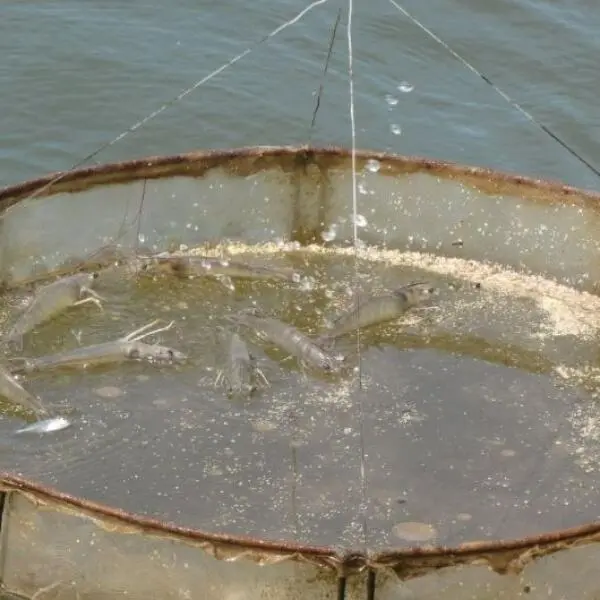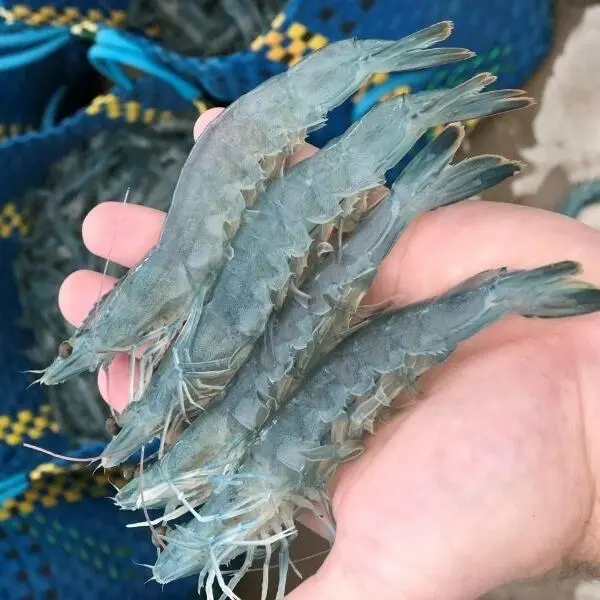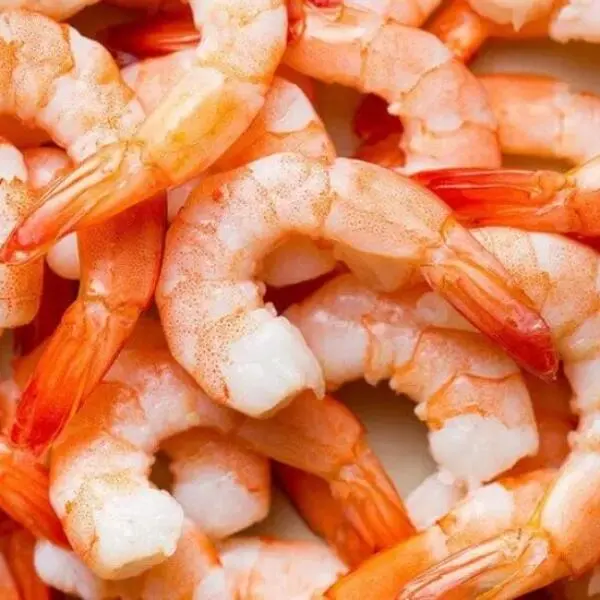
Shrimp molting is a critical process in the life cycle of shrimp, where they shed their old exoskeleton to grow a new one. This natural process is essential for their growth and development, occurring regularly throughout their lifespan. For shrimp farmers, understanding the shrimp molting process and managing it effectively is vital for maintaining healthy shrimp populations and optimizing yields. This article explores what shrimp molting is, its stages, potential problems, and strategies to promote successful molting.
What Is Shrimp Molting?
Molting is the process by which shrimp discard their outer exoskeleton, or cuticle, to accommodate body growth. As crustaceans, shrimp rely on this rigid exoskeleton for protection and support. However, it doesn’t expand as they grow, necessitating periodic shedding and regeneration.
In healthy shrimp, the molting process occurs every 3–4 weeks for adults and every 1–2 weeks for juveniles due to their faster growth rates. This biological phenomenon not only facilitates growth but is also critical for breeding, as female shrimp release pheromones post-molt to attract mates.
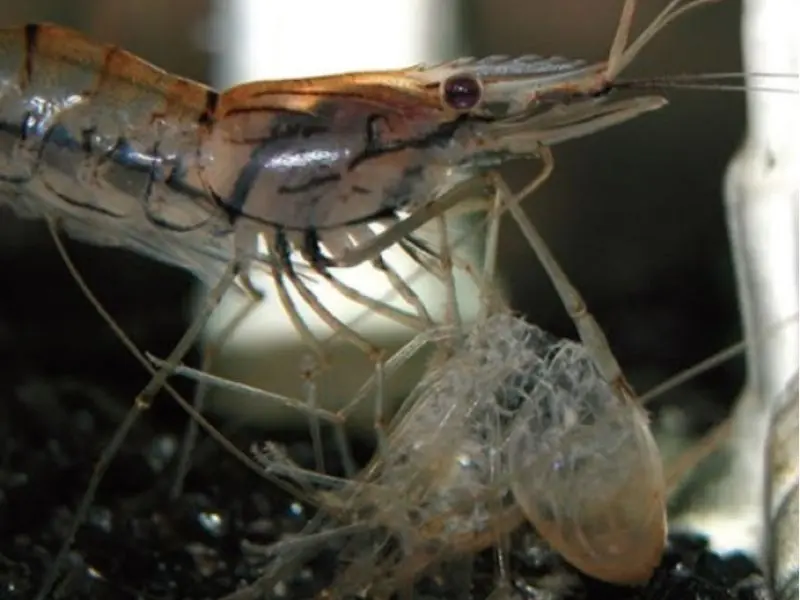
The molting process occurs every 3–4 weeks for adults and every 1–2 weeks for juveniles
Stages of the Shrimp Molting Process
The molting process consists of four distinct stages:
- Post-Molt: This is the phase immediately after the shrimp sheds its old exoskeleton. During this time, shrimp absorb significant amounts of water to expand their body size. Their new cuticle remains soft and vulnerable, requiring 42–72 hours to harden completely.
- Molting: In this stage, shrimp actively shed their old shell. They relax their muscles and gradually squeeze out of the exoskeleton. The discarded shell, often mistaken for a dead shrimp, is nutrient-rich and commonly consumed by the shrimp or their tankmates.
- Inter-Molt: The new exoskeleton hardens during this stage. Shrimp consume more protein and minerals to reinforce their cuticle, leading to an increased appetite. This phase is critical for nutrient absorption and shell strengthening.
- Pre-Molt: Before the next molting cycle, shrimp prepare by developing a new cuticle beneath their existing shell. This stage often coincides with a reduced appetite as their energy focuses on molting preparation.
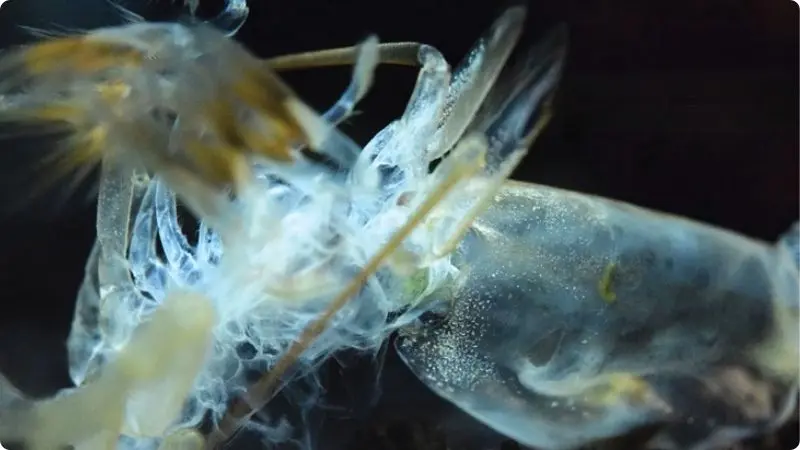
Stages of the Shrimp Molting Process
Why Is Shrimp Molting Important?
Molting is vital for shrimp growth, health, and reproduction. It allows them to:
- Increase body size and weight.
- Strengthen their exoskeleton for protection.
- Enhance resistance to diseases by shedding damaged or infected shells.
- Facilitate reproduction, as molting is a precursor to mating in females.
While molting is a natural process, it can be fraught with challenges. Poor water quality, inadequate nutrition, and environmental stress can lead to shrimp molting problems, such as incomplete molts or mortality.
Managing Shrimp Molting Effectively
Farmers must create optimal conditions to ensure smooth molting cycles. Key factors to monitor include water quality, nutrition, and environmental parameters.
1. Water Quality Management
Water quality significantly impacts molting success. Relevant parameters for consideration are:
- Dissolved Oxygen (DO): Shrimp require higher oxygen levels during molting. Maintain DO levels at 4–6 mg/L by using aerators, especially during molting phases.
- pH Levels: Optimal pH levels for molting are 7.0–8.5, with 7.5–8.0 being ideal. Stabilize pH using lime (CaCO₃ or dolomite) or buffer solutions as needed.
- Alkalinity: Maintain alkalinity levels above 120 mg CaCO₃/L. Adding minerals such as calcium or magnesium can support shell formation.
- Salinity: Higher salinity increases dissolved minerals, aiding molting. However, excessive salinity (>25‰) can result in overly thick shells, prolonging molting.
- Temperature and Transparency: Water temperature should remain consistent, and pond transparency should be between 30–40 cm to balance algae levels.
2. Nutrition and Feed Management
Nutrition plays a pivotal role in shrimp molting stages. A lack of essential nutrients can hinder shell development, resulting in failed molts.
- Protein Requirements: Feed containing 32–45% protein ensures proper shell formation. Adjust feed quantities based on growth stages and monitor feeding trays for leftovers.
- Mineral Supplements:
Additives like calcium, phosphorus, and trace minerals promote healthy exoskeleton development. Effective supplements include:
Vimekat: Contains Butaphosphan to enhance metabolism and shell hardening.
Lactozyme: Converts phosphorous for better absorption, preventing soft shells.
Canxiphot: Provides essential minerals for molting.
- Feeding Schedule: Shrimp often molt at night, so evening meals should include mineral supplements to support the process.
3. Monitoring Behavior and Health
Observing shrimp behavior can indicate their readiness to molt. Signs include reduced movement, standing still, and decreased grazing. Farmers should also watch for signs of disease, such as fungal infections or algae overgrowth, which can impede molting.
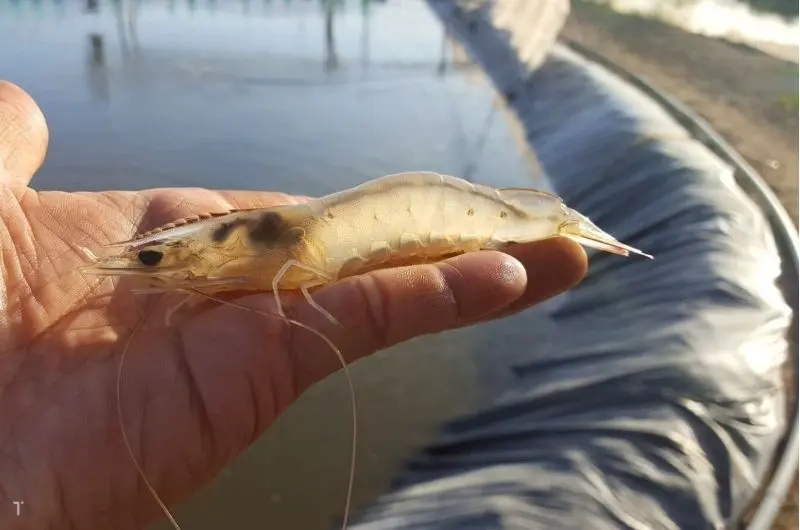
Observing shrimp behavior can indicate their readiness to molt
Common Shrimp Molting Problems and Solutions
- Incomplete Molts:
Often caused by poor water parameters or insufficient minerals. Regularly test and stabilize water conditions to prevent this issue. - Osmotic Shock:
Rapid changes in water hardness or salinity can lead to osmotic imbalance, damaging shrimp cells. Use drip acclimation during water changes to minimize stress. - Disease and Parasites:
Infections can weaken shrimp, making molting difficult. Maintain a clean pond environment and apply preventive measures like probiotic treatments
FAQs About Shrimp Molting
Shrimp molting is a fascinating yet critical process for shrimp growth and overall health. Below are some frequently asked questions to provide deeper insights into this essential aspect of shrimp care.
1. What is shrimp molting, and why does it matter?
Molting is the process where shrimp shed their exoskeleton to grow a new, larger one. This is crucial for their growth, as the rigid exoskeleton cannot expand. It also helps improve their immunity by eliminating harmful substances attached to the old shell. Proper molting contributes to better growth rates and higher resistance to diseases.
2. How often do shrimp molt?
The molting frequency varies based on the shrimp's age and environmental conditions. Juvenile shrimp molt every 1-2 weeks due to rapid growth, while adults molt approximately every 3-4 weeks. Consistent water parameters and optimal nutrition can influence the regularity of molting.
3. What are the signs of shrimp preparing to molt?
Before molting, shrimp may become less active and reduce feeding. They often isolate themselves in preparation. Observing such behavior alongside a consistent water quality regime can help ensure the process proceeds without issues.
4. Why do molting problems occur?
Molting issues typically arise due to imbalanced water parameters, such as unstable pH, inadequate minerals, or low dissolved oxygen. Nutritional deficiencies, like insufficient protein or calcium, can also prevent the formation of a strong new exoskeleton, leading to failed molts.
5. Should shrimp molts be removed from the tank?
Generally, no. The leftover molt is a rich source of calcium, which shrimp consume to strengthen their new shells. However, in cases of disease or parasite infestations, removing the molt may be prudent to prevent the spread of pathogens.
Understanding shrimp molting is vital for successful shrimp farming or aquarium care. Proper monitoring and proactive management ensure that this natural process benefits shrimp health and productivity.
Conclusion
Understanding what shrimp molting is and its various stages allows shrimp farmers to manage this natural process effectively. By maintaining optimal water quality, providing a balanced diet, and monitoring shrimp behavior, farmers can minimize shrimp molting problems and promote healthy growth. Proper molting management not only ensures the well-being of shrimp but also maximizes productivity and harvest quality.
For farmers, molting is not just a phase but an opportunity to enhance shrimp health and resilience, paving the way for a thriving aquaculture business.
Related Articles
How Can We Make Shrimp Farming More Sustainable?
The shrimp farming industry in Vietnam has emerged as a cornerstone of the nation's aquaculture ...
How big can tiger shrimp grow?
Tiger shrimp , including the highly sought-after black tiger shrimp, is a lucrative species in the ...
All About Pink Shrimp: The Fascinating World of Pink Shrimp
Pink shrimp (Farfantepenaeus duorarum) stands as one of the most valuable and fascinating marine ...
Why Minerals Are Crucial for Shrimp Health
Minerals are indispensable for maintaining the overall health of shrimp. These tiny crustaceans, ...
What Factors Influence Shrimp Growth Rates?
Shrimp cultivation has become an increasingly profitable sector due to rising global demand. ...
Discover the Hidden Health Benefits of Shrimp
Shrimp is more than just a versatile and delicious seafood; it’s a nutrient-packed option that ...

